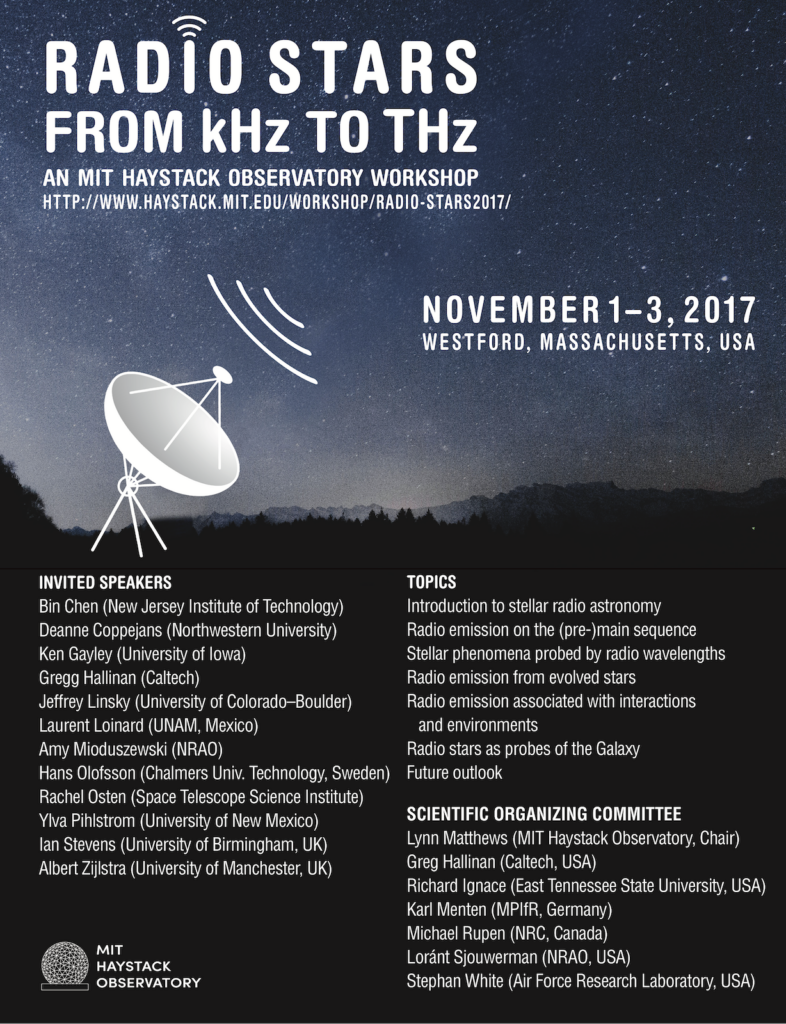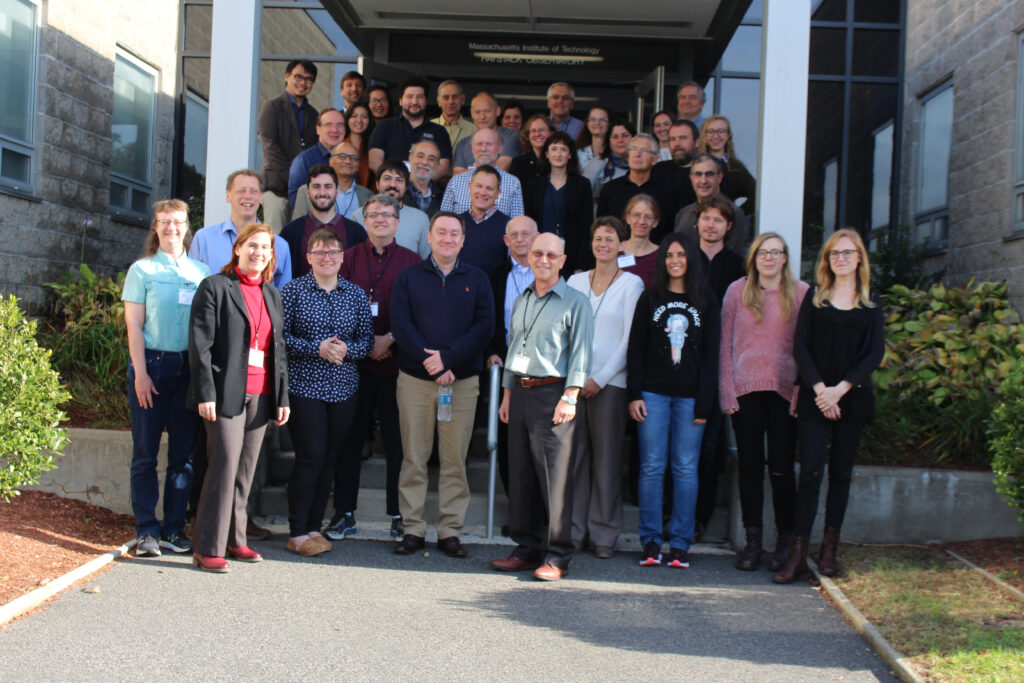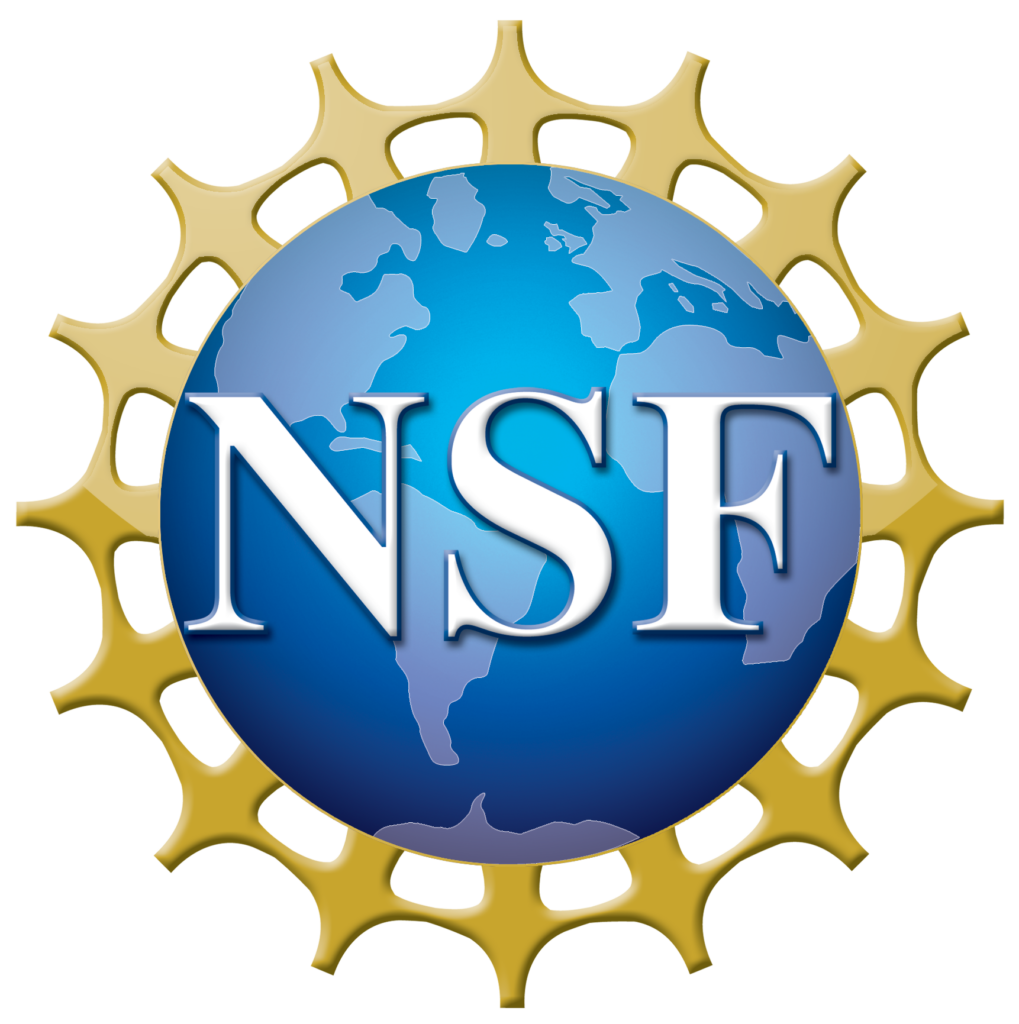Radio Stars: From kHz to THz (2017)
November 1–3, 2017
Westford, Massachusetts, USA

Detectable radio emission arises from stars across the entire H-R diagram, spanning virtually every stage of stellar evolution. The origin of stellar radio emission stems from a wide variety of physical processes, and observations of stars at radio wavelengths probe a broad range of astrophysical phenomena that cannot be studied by any other means.
This second “Radio Stars” workshop provides a forum for the presentation and discussion of the many advances in stellar and solar astrophysics enabled by the current generation of state-of-the-art radio facilities operating from meter to submillimeter wavelengths. We seek to bring together both observers and theorists to stimulate a lively exchange of ideas on how radio wavelength observations can provide new and unique insights into the workings of stars.
The workshop will focus on both hot and cool stars spanning the pre-main sequence through post-main sequence evolutionary phases. One underlying theme will be how new technologies that bring ever increasing sensitivity and angular resolution are opening increasing swaths of the electromagnetic spectrum to the studies of stars (“from kHz to THz”) are revolutionizing our understanding of stellar astrophysics in the process. We will also look toward the future to identify the needs and wishes of the stellar community for new radio facilities that are planned or underway.
Conference summary: https://ui.adsabs.harvard.edu/abs/2019PASP..131a6001M/abstract
Important dates
May 1, 2017: Registration and abstract submission open
July 14, 2017: Deadline for submission of abstracts for contributed talks
August 23, 2017: Full meeting program, including oral contributions announced
August 31, 2017: Deadline to apply for financial aid
October 2, 2017: Registration closes. Last day to secure special hotel rates. Deadline to sign up for workshop banquet.
October 15, 2017: Deadline for submission of poster abstracts.
November 1-3, 2017: The workshop.
Organizing committees
Scientific Organizing Committee
- Lynn Matthews (MIT Haystack Observatory, Chair)
- Greg Hallinan (Caltech, USA)
- Richard Ignace (East Tennessee State University, USA)
- Karl Menten (MPIfR, Germany)
- Michael Rupen (NRC, Canada)
- Loránt Sjouwerman (NRAO, USA)
- Stephan White (Air Force Research Laboratory, USA)
Local Organizing Committee
- Heidi Johnson (MIT Haystack Observatory)
- Nancy Wolfe Kotary (MIT Haystack Observatory)
- Lynn Matthews (MIT Haystack Observatory)
- Mary Reynolds (MIT Haystack Observatory)
- Jason SooHoo (MIT Haystack Observatory)
Registered participants
| Name | Affiliation | Country |
| Tomasz Kaminski | CfA | USA |
| Lynn Matthews | MIT | USA |
| Amy Mioduszewski | NRAO | USA |
| Robert Mutel | University of Iowa | United States |
| Deanne Coppejans | Northwestern University | United States |
| Nimesh A Patel | Harvard-Smithsonian Center for Astrophysics | USA |
| Ylva Pihlstrom | UNM | United States |
| Luis Henry Quiroga-Nuñez | Leiden Observatory / JIVE | Netherlands |
| Lorant Sjouwerman | NRAO | USA |
| Rachel Osten | STScI | USA |
| Gregg Hallinan | Caltech | USA |
| Jackie Villadsen | NRAO Charlottesville | USA |
| Marin Anderson | Caltech | United States |
| A M S Richards | JBCA, University of Manchester | UK |
| Kazu Akiyama | MIT Haystack Observatory | USA |
| Bin Chen | New Jersey Institute of Technology | United States |
| Hans Olofsson | Space, Earth and Environment, Chalmers | Sweden |
| Vladimir Strelnitski | Maria Mitchell Observatory | U.S.A. |
| Farhad Yusef-Zadeh | Northwestern University | USA |
| Rebecca Azulay | Max Planck Institute for Radio Astronomy | Germany |
| Peter K. G. Williams | Harvard-Smithsonian Center for Astrophysics | USA |
| Christene Lynch | University of Sydney/CAASTRO | Australia |
| Andrew Zic | The University of Sydney | Australia |
| Grazia Umana | INAF-Osservatorio Astrofisico di Catania | Italy |
| Melodie Kao | Caltech | USA |
| Rachael Ainsworth | Jodrell Bank Centre for Astrophysics | UK |
| Ian Stevens | University of Birmingham | UK |
| Michael Rupen | NRC-Canada | Canada |
| Stephen White | AFRL | USA |
| Karl Menten | MPI for Radio Astronomy | Germany |
| Kathleen Kraemer | Boston College | USA |
| Paul Withers | Boston University | USA |
| Jeffrey Linsky | JILA/University of Colorado and NIST | USA |
| Robert Klement | CHARA Array, Georgia State University | USA |
| Colin Lonsdale | MIT Haystack Observatory | USA |
| Jens Kauffmann | MIT Haystack | USA |
| Francesco Cavallaro | INAF-OACt | Italia |
| Filomena Bufano | INAF-Osservatorio Astrofisico di Catania | Italy |
| Matteo Munari | INAF-Osservatorio Astrofisico di Catania | Italy |
| Holly Andrews | University College London | UK |
| Scott Wolk | Harvard-Smithsonian Center for Astrophysics | USA |
| Sofia P Moschou | Harvard Smithsonian Center for Astrophysics | USA |
| Mark Reid | Harvard-Smithsonian CfA | USA |
| Nancy R. Evans | SAO | USA |
| Ken Gayley | University of Iowa | United States |
| Michel Guelin | IRAM | France |
| Richard Ignace | East Tennessee State University | USA |
| Albert Zijlstra | University of Manchester | UK |
| Danielle Fenech | University College London | United Kingdom |
| Laurent Loinard | Universidad Nacional Autonoma de Mexico | Mexico |
| Corrado Trigilio | INAF-Osservatorio Astrofisico di Catania | Italy |
Presentations
Links to slides and audio from many of the Haystack “Radio Stars: from kHz to THz” workshop presentations (including posters) are available below.
Wednesday, November 1
I. Setting the Stage
Chair: Lynn Matthews
9:00-9:05 Welcome remarks – Colin Lonsdale
9:05-9:15 Opening remarks/logistics – Lynn Matthews
9:15-10:00 “An Overview of Stellar Radio Astronomy” (Invited) – Jeffrey Linsky (pdf)
II. Radio Emission from Young Stars
Chair: Peter Williams
10:00-10:30 “Radio Emission from Pre-Main Sequence Stars” (Invited) – Laurent Loinard (pdf) (audio)
10:50-11:10 “Update on the JVLA-Chandra Orion Project” – Scott Wolk (pdf)
11:10-11:30 “VLBI Astrometry on Binary Systems in the AB Doradus Moving Group” – Rebecca Azulay (pdf)
11:30-11:50 “Low Mass Young Stars at Metre Wavelengths” – Rachael Ainsworth (pdf) (audio)
11:50-12:10 “Unique Radio Stars: MWC 349A” – Vladimir Strelnitski (pdf)
III. Radio Emission from Hot Stars
Chair: Danielle Fenech
1:10-1:50 “Radio Emission from Massive Stars” (Invited) – Ian Stevens (pdf)
1:50-2:10 “Modeling the Radio Continuum Emissions of Massive Star Winds” – Richard Ignace (audio)
2:10-2:30 “Revealing the Structure of the Outer Disks of Be Stars” – Robert Klement (pdf) (audio)
IV. The Sun as a Radio Star
Chair: Rachel Osten
2:30-3:00 “Solar Radio Emission at High Frequencies” (Invited) – Bin Chen (pdf) (audio)
3:25-3:45 “Circular Polarization in Radio Emission from the Sun” – Stephen White (pdf)
3:45-4:05 “High Fidelity Solar Imaging with the Murchison Widefield Array” – Colin Lonsdale
V. Active Stars
Chair: Corrado Trigilio
4:05-4:25 “A Search for Thermal Gyrosynchrotron Emission from Hot Stellar Coronae” – Robert Mutel (pdf)
4:25-4:45 “Radio Emission Signatures from Next Generation Stellar Activity Simulations” – Sofia Paraskevi Moschou (pdf)
4:45-5:05 “Chasing Low Frequency Radio Bursts from Magnetically Active Stars” – Christene Lynch (pdf) (audio)
IV. Poster Previews
Chair: Richard Ignace
5:05-5:08 “Asymmetric Ejecta of Cool Hypergiants in the Massive Cluster Westerlund 1” – Holly Andrews (pdf) (audio)
5:08-5:11 “Should Radio Observations Detect Cepheids?” – Nancy Evans (pdf) (audio)
5:11-5:14 “The eMERLIN Legacy L-Band Cyg OB2 Radio Survey (COBRaS)” – Danielle Fenech (pdf) (audio)
5:14-5:17 “An ALMA 3mm Continuum Census of Westerlund 1” – Danielle Fenech (pdf)
5:17-5:20 “Simultaneity and Flux Bias between 43 and 86 GHz SiO Masers” – Lorant Sjouwerman (pdf)
5:20-5:23 “How Do Transiting Exoplanets Affect Observed Stellar Radio Emissions?” – Paul Withers (pdf) (audio)
5:23-5:28 “Studies of Bursty and Quiescent Emission of Two Ultra-Cool Dwarfs with the GMRT” – Andrew Zic (pdf)
Thursday, November 2
VI. Cool and Ultracool Dwarfs
Chair: Stephen White
9:00-9:30 “Radio Emission from Cool and Ultracool Dwarfs” (Invited) – Gregg Hallinan
9:30-9:50 “Spectroscopy and Imaging of Radio Bursts on Active M Dwarfs” – Jackie Villadsen (pdf)
9:50-10:10 “Jovian Magnetospheres Beyond the Solar System” – Peter Williams (pdf) (audio)
10:10-10:30 “Constraining Fully Convective Magnetic Dynamos Using Brown Dwarf Auroral Radio Emission” – Melodie Kao
10:30-11:00 “Extrasolar Space Weather” (Invited) – Rachel Osten (pdf) (audio)
11:30-11:50 “Monitoring Nearly 4000 Nearby Stellar Systems with the OVRO-LWA for Extrasolar Space Weather” – Marin Anderson
VII. Radio Stars as Denizens of the Galaxy
Chair: Loránt Sjouwerman
11:50-12:10 “High-Frequency Radio Emission from Stars within 2 pc of Sgr A*” – Farhad Yusef-Zadeh (pdf) (audio)
1:10-1:40 “Stellar Masers as Probes of the Galaxy” (Invited) – Ylva Pihlström (pdf) (audio)
1:40-2:00 “Characterizing Evolved Stars in the Inner Galaxy Using Radio and Optical Astrometric Measurements” – Luis Henry Quiroga-Nuñez
VIII. Radio Astrophysics Across the H-R Diagram
Chair: Loránt Sjouwerman
2:00-2:40 “Stellar Winds Across the H-R Diagram” (Invited) – Ken Gayley (pdf)
3:10-3:40 “The Role of VLBI in Stellar Radio Astronomy” (Invited) – Amy Mioduszewski (pdf) (audio)
IX. Radio Emission from Cool Evolved Stars
Chair: Tomasz Kamiński
3:40-4:00 “Super-Detailed Observations of Mass Loss from Red Supergiants and AGB Stars” – Anita Richards (pdf) (audio)
4:00-4:40 “Radio Observations of AGB Stars” (Invited) – Hans Olofsson (pdf) (audio)
4:40-5:00 “IRC+10216 in 3-D: Morphology of a TP-AGB Star Envelope” – Michel Guélin (pdf)
Friday, November 3
X. Radio Emission Beyond the Main Sequence
Chair: Amy Mioduszewski
9:00-9:40 “Post-AGB Stars and Planetary Nebulae” (Invited) – Albert Zijlstra (pdf) (audio)
9:40-10:00 “Spectral Line Surveys of Pre-Planetary and Planetary Nebulae with the Submillimeter Array” – Nimesh Patel
10:00-10:40 “White Dwarf Binaries” (Invited) – Deanne Coppejans (pdf) (audio)
11:10-11:30 “Tracing Rare Isotopes in Eruptive Stars” – Tomasz Kamiński
11:30-11:50 “New Developments in Radio Studies of Novae” – Michael Rupen (pdf)
XI. The Future of Stellar Radio Science
Chair: Michael Rupen
11:50-12:10 “The SCORPIO Project: Stellar Radio Emission in the SKA Era” – Grazia Umana
1:15-2:00 Discussion Forum – Moderators: Mark Reid, Michael Rupen, Anita Richards (pdf)

Sponsor

We gratefully acknowledge support for the Radio Stars workshop through a grant from the National Science Foundation.